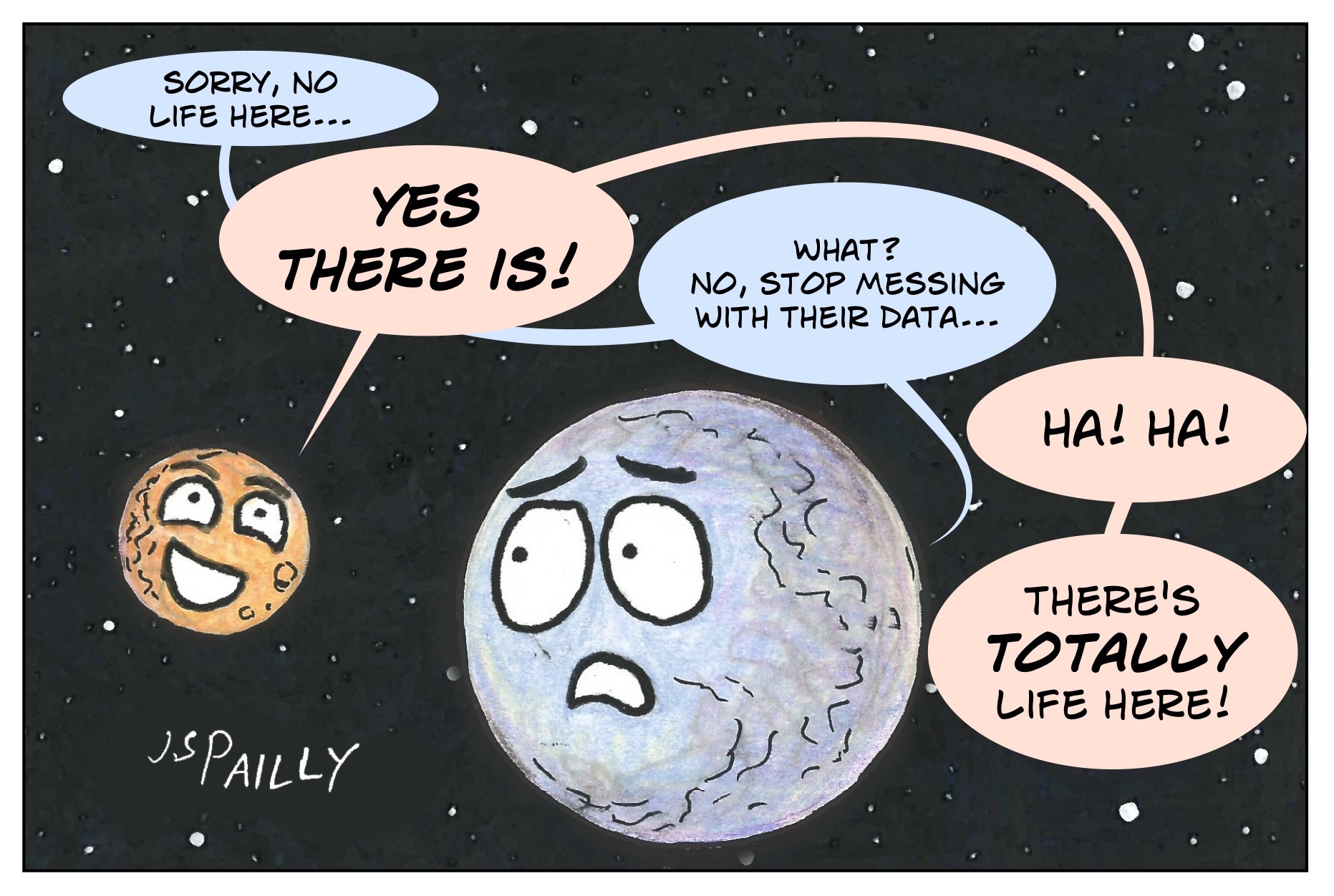I’ve been looking forward to this for many years now: we’ve discovered thousands of exoplanets out there, and now we may have discovered our very first exomoon!
There are a handful of moons in our own Solar System that may be home to alien life, so if we can start observing and studying exomoons, in addition to exoplanets, that greatly expands the number of places we can search for alien life and greatly increases the chance that we might find something.
However, exomoons may also pose a serious problem for astrobiologists. You see, one of the things astrobiologists are looking for are planets with atmospheres in a state of “chemical disequilibrium.” For example, chemicals like oxygen and methane should react with each other and thus remove each other from the atmosphere. The only way those two chemicals can coexist long term is if some ongoing process (like biological activity) is constantly replenishing them.
But imagine an exoplanet with an oxygen-rich atmosphere and an exomoon with a methane-rich atmosphere. From here on Earth, that planet-moon system could easily be mistaken for a single exoplanet, with the two separate atmospheres appearing to be one atmosphere in that much coveted state of disequilibrium.

In this paper—a paper which describes its results as “inconvenient, yet unavoidable”—this is referred to as the exomoon false-positive scenario, but I’m calling it the trickster moon problem, because someday some undetected exomoon might trick us into thinking we’ve discovered alien life when we haven’t.
The good news is that we may have already detected one exomoon, so in time we should get better at detecting others. But as that “inconvenient yet unavoidable” paper warns, it may be decades (at least) before we can reliably tell which exoplanets do or do not have moons. Until then, fellow space explorers, beware of those trickster moons!
Hmmm. Would this still be an issue if we detected only one of the chemicals? Or a heavy amount of one but only trace amounts of the other? (For example, Earth’s atmosphere is 21% oxygen with only trace amounts of methane.)
LikeLiked by 2 people
If we only detected one chemical, that wouldn’t necessarily be considered a biosignature anyway, though that might still be worth studying for other reasons. It’s the mix of two chemicals that should react with each other that makes an atmosphere biologically interesting.
The paper I cited went into a lot of detail about how we might be able to tease apart the readings we’re getting from two separate atmospheres. A lot of the math went over my head, as usual, but I gather that we could calculate the optical depth of a specific gas, and if the depth exceeds 100% then we know we’re looking at two separate atmospheres.
So I think if Earth had Titan as it’s moon, the optical depth of methane would be slightly higher than 100%, and alien observers would know there are two separate atmospheres with methane in them. But if the aliens are looking at the Earth-Moon system we actually have, they might not be able to tell if that trace amount of methane is part of Earth’s atmosphere or just a very thin methane atmosphere on the Moon.
LikeLiked by 2 people
I still remember the first exoplanet being discovered. Now exomoons!
LikeLiked by 2 people
I know, right! I’ve been looking forward to exomoons for a long time now. I think it was almost a decade ago that an astronomer I met at a writing conference teased me about the possibility. He told me we’d start finding them soon, and now here we are!
LikeLiked by 1 person
What if an exomoon has an exomoon?
LikeLiked by 2 people
I’m sure it’s possible, but it would be very hard to keep a moon-with-a-moon system gravitationally stable long term. Otherwise we’d probably have seen something like that in our own Solar System by now.
LikeLiked by 1 person
What if the solar system has some non-exomoon trickster moons? If there is , i think every moon (exept Enceldus) is a trickster moon.
LikeLiked by 2 people
You know, I hadn’t thought of it like that.
LikeLiked by 1 person